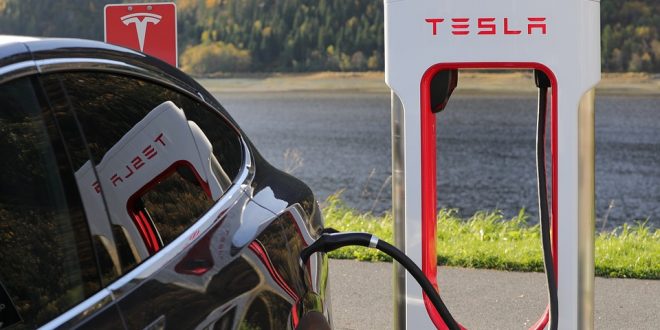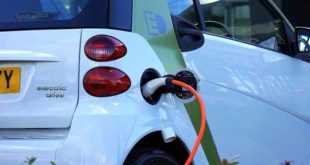The green technological movement is improving various industries. Since Tesla revolutionized the automobile market, the transportation sector began transitioning away from its fossil fuel reliance. The shift promoted eco-consumerism values, forming new production and sourcing standards.
Vehicles without tailpipe emissions significantly reduce atmospheric degradation. We may additionally limit air pollution by enhancing the energy grid’s sustainability. Device enhancements, customer values, and government regulations promote green development in the national energy sector.
Government Regulations
Since President Biden took office, he has promoted national climate change prevention standards. He established the Build Back Better plan, creating an ambitious carbon neutrality goal. Attaining the objective requires sustainable alterations to the energy grid.
The Biden plan involves developing an electric grid that sources power from renewable devices. The majority of our national energy comes from coal and natural gas. During combustion, these sources generate the enhanced greenhouse effect.
He additionally signed the Paris Agreement, furthering our commitment to emission reductions. The agreement unites various nations by establishing climate change prevention techniques. Over time, the efforts will limit the global temperature rise to 2 degrees Celsius.
Developing a clean energy grid can support the electric vehicle (EV) industry’s expansion and decrease global emissions. It may additionally improve society’s access to clean charging stations.
Modernization and Improvements
Expanding EV drivers’ access to clean power requires a modernization of the energy grid. The current system is outdated and unable to support green technological development. We can modernize national power sources by developing a smart grid.
Grid modernization requires system restructuring and updated computer processing, communication, and control technologies. It will source a significant portion of energy from solar and wind power. The goal of development is reducing greenhouse gas emissions and improving technological support.
Enhancing the distribution and efficiency of power delivery requires the installation of transmission lines. They connect to renewable energy sources, accessing wind or solar powering during conventional outages. Additionally, they help EV charging stations efficiently access electricity.
Drivers have to plan their road trips around EV charging stations because of resource scarcity. This sustainable transportation limitation drives the demand for grid improvements. Before expanding renewable energy production, we must develop efficient storage techniques.
Environmental researchers and engineers recently developed an industrial-scale renewable energy storage facility in Monterey, California. They converted an old power plant into a battery holding center. One unused smokestack contains a 300-megawatt lithium-ion battery.
The facility can produce and store nearly 1,200 megawatt-hours of clean energy every four hours. It sends excess power to Northern California residents during peak hours, maintaining low-emission energy demands. The electric grid may utilize the Moss Landing energy storage technology, expanding its production and distribution processes.
Expansion Techniques
Today, the majority of individuals have a smartphone, reducing their reliance on landlines or phone booths. We may utilize unused phone booths, converting them into EV charging stations.
The industry also plans on accessing a portion of the Build Back Better plan’s funding. Biden allocated $2 trillion to the clean energy sector, helping expand production and distribution. Companies and engineers can utilize the budget, developing an efficient electric grid and more charging stations.
Unlike conventional vehicle fueling, electric charging stations take time to limit stress on an EV’s battery. Malls, shopping centers, and other profitable regions may install charging stations, encouraging consumers to purchase their products while waiting for a full battery. An increase in sales will encourage more companies to support the green technology’s expansion financially.
Additionally, we may utilize government regulations to enforce the accessibility of clean energy charging. Once the U.S. establishes a sustainable electric grid, we can expand EV support sources. Los Angeles generated ambitious green building regulations, increasing statewide access to clean charging.
The state is working towards its climate change prevention goal of reducing greenhouse gas emissions by 40% in the coming decades. Increasing their production and distribution of renewable electricity is supporting the objective. Their mass generation of low-emission energy promotes EV charging station regulations.
The California Green Building Code requires new structures to contain EV charging capabilities. One- and two-family homes, hotels, apartments, and more must have a station or adaptable connection. If all states developed similar codes, we could increase renewable energy distribution.
The Future of Power Sourcing
Biden re-established a green vision for America’s energy industry. Transitioning away from fossil fuels towards renewable power can significantly reduce adverse environmental effects and decrease energy costs. We can expect our reliance on “dirty” energy to decrease over time, enhancing electric grid development.
Emily Newton is the Editor-in-Chief of Revolutionized Magazine, an online publication that explores innovations in science and technology.

 Alternative Energy HQ solar power for homes, wind energy, and bio fuel issues
Alternative Energy HQ solar power for homes, wind energy, and bio fuel issues







